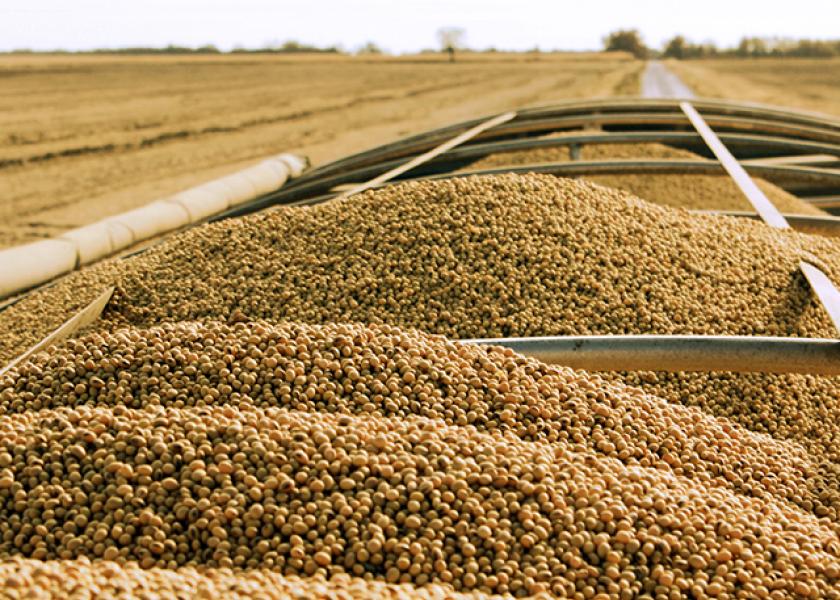
This guest editorial was shared by Jay Vroom, chairman, Trust In Food and America’s Conservation Ag Movement Board of Advisers.
Now to pivot back to what I care about—the American farmer. (If you didn’t read the first article in this series, click here for a refresher.) How do markets and profits flow from the United Nations and global sustainability trends?
My first thought is that no single sustainability metric or its stand-alone value is likely to grab the economic attention of most U.S. farmers. What does make sense to me is to translate the elements of sustainability back to the added value of the commodities American farmers grow.
Simply stated, with some level of farm product identity preservation, why can’t the U.S. ag industry head toward a variety of verifiable claims such as:
- This bushel of No. 2 yellow corn from Illinois can be traced to fields under specific sustainability practices, with accompanying metrics on water quality improvements, carbon sequestered, and wildlife habitat for threatened species protected.
- This container of California almonds has sustainability-verified metrics on water use efficiency and wildlife habitat.
- This bale of Mississippi cotton has an extended sustainability rating metric based on its benefits for pollinators.
- These New York apples get a boost in value thanks to quantified sustainability factors connected to improved harvest-labor conditions.
- This cargo of American beef has a plus-up because the rangeland on which the cattle were grazed ranked positively thanks to the rancher’s proactive control of invasive species and other grazing management practices resulting in carbon sequestration.
At one time, those kinds of measures seemed like green wash. But with today’s precision and digital ag capabilities, it’s rapidly becoming reality.
I’ve been around the planet a few times (and around the sun a bit, too). I’ve seen bare-earth planting in the breadbasket of Europe, reliance on full-tillage methods sometimes powered by animals and not machines in Africa, and crop-loss levels in Asia that are startling. I believe that U.S. farmers are well ahead of the rest of the world when it comes to precision and digital capacities on their farms.
Now that these tools are in use to quantify sustainability of crop and animal production, preserving the identity of those commodities along the way, I believe we can now start building on existing U.S. export markets by offering and delivering embedded sustainability values along with our produce. (Don’t believe it? Look what Ireland is doing with its Origin Green program.)
Why can’t those added production values gain us market share and even more premium pricing for some commodities?
USDA has valued 2020 ag exports at $145.7 billion—the second highest annual total ever. Much of our increase in export earnings is from higher value commodities. Why not offer sustainability metrics across all U.S. farm products to boost our sales even more? The world wants more productivity, cleaner water and climate change solutions such as carbon sequestration. U.S. farmers have an extraordinary opportunity to use precision and digital tools to get credit for–and continue improving on–our environmental stewardship..
Think the SDGs and global demand for sustainably produced food is a non-U.S. affair that doesn’t concern farmers with exclusively domestic buyers? Think again.
In 2019, USDA reports the U.S. imported $128 billion in food and ag products. For the 10 years 2008-2018, almost one-quarter of food grains consumed in the U.S. were imported. Surely we could appeal to the sustainability-oriented purchasing power of U.S. consumers and illustrate how U.S.-produced food grains are more sustainable than those from other sources–thus winning back some of our own domestic markets with good data and a focused effort?
The buying habits of U.S. food consumers, and the conservation agriculture practices of U.S. farm operations are big ships—not so easy to turn. But with forethought and use of what we already have in the way of best farming practices and digital means to track it all, I think there are markets and profits to be had from sustainability.
Of course the government will play a role in all that is “farming sustainability”. Lots of political speech since the new Congress and the Biden Administration have been in power this year has emphasized “voluntary” government schemes for farmer participation in carbon sequestration programs. That’s important to hold those leaders to that commitment–and also to approaches that truly can be measured–but we farmers should also insist that government incentives on all these sustainability fronts have as minimal an impact on true markets as possible–please no “bait and switch” gimmicks either!
What we might be giving away today (to accomplish more sustainability) could be a premium market tomorrow. And the biggest sales event ever for our opportunities is going on by way of the UN Food Systems Summit. I’m eager to be part of this new American farm renaissance!



